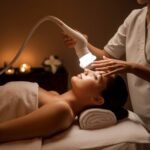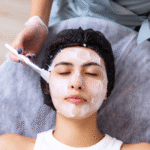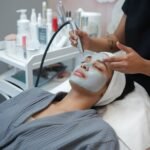How Well Do Body Peels Work? Can Chemical Peels Really Transform Your Skin from Head to Toe?
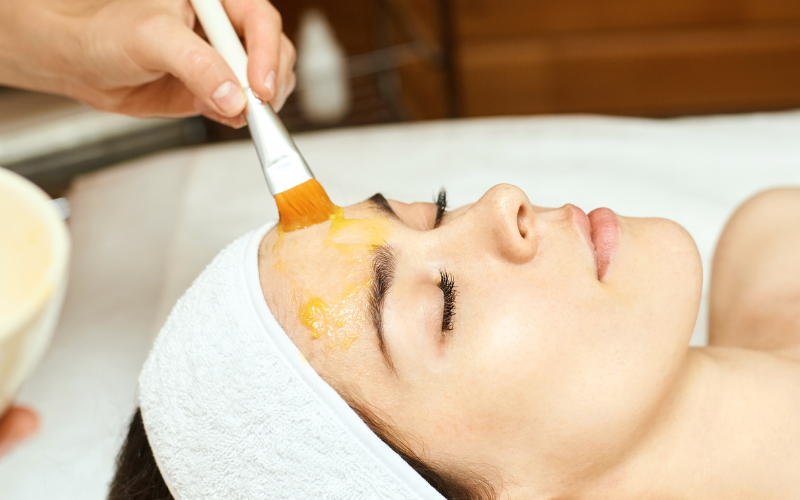
You’ve probably heard about the transformative effects of facial peels, but have you ever considered the benefits of body peels—also known as full‑body peeling—for your entire skin? Just like the face, the rest of your skin can suffer from dullness, uneven tone, keratosis pilaris and textural issues. Body peels work by deeply exfoliating the outer layers of dead skin cells, encouraging regeneration and collagen production. This process not only helps facial skin rejuvenate but can also tackle tougher skin concerns like scarring and hyperpigmentation. However, you might be wondering if they’re right for your skin type, whether peels are good for your skin or how often you should undergo these treatments to see results. Let’s explore further the potential of full-body skin renewal.
What is a Body Peel, and How Does it Work?
A body peel, also called a chemical body peel, uses a solution to exfoliate dead skin cells and reveal smoother, healthier skin. This type of treatment targets the outermost layer of the skin and employs exfoliating agents—with ingredients such as AHAs, BHAs, or TCA that help loosen old skin cells so they can naturally slough off, revealing fresher skin beneath. By removing this “outer barrier,” a body peel enhances texture, improves tone and prepares skin to better absorb subsequent treatments.
In chemical exfoliation, specific acids like glycolic (AHA) or salicylic (BHA) are utilized to break down dead skin and unclog pores, enabling uniform treatment across large areas without the abrasiveness of scrubs or brushes. Unlike mechanical exfoliation, these agents penetrate uniformly and deeply, making them effective for thick body skin.
During a body peel, the chemical solution encourages new cell growth and can stimulate collagen and elastin production, helping maintain skin elasticity and firmness. Regular treatments can diminish signs of ageing, improve skin tone, and even out your complexion, making it a powerful tool in your skin‑care regimen. The effectiveness of a body peel in promoting skin renewal lies in its ability to penetrate multiple skin layers, prompting thorough exfoliation, cell turnover and collagen stimulation.
Understanding the Chemical Peel Process
To fully grasp the effectiveness of a chemical peel, you need to understand the types available and their specific benefits for different skin concerns. Each type of peel—ranging from superficial to deep—targets unique issues such as acne scars, pigmentation and wrinkles. Knowing these distinctions helps you decide which body peeling option or speciality peel will deliver the results you’re seeking.
Types of Peels for Different Skin Concerns
Chemical peels are broadly categorized into superficial, medium and deep peels. Superficial peels (using gentle AHAs like glycolic or lactic acid) treat mild hyperpigmentation and fine lines. Medium peels penetrate deeper, utilizing stronger acids such as TCA to target moderate acne scars, body acne and more pronounced discolouration. Deep peels employ the highest concentrations to address severe wrinkles, substantial photo‑damage and deeper scars. Speciality peels, such as those formulated for keratosis pilaris or severe acne, can be tailored to specific concerns. Body peels are often more potent than facial peels because body skin is thicker and can tolerate higher strengths, allowing them to tackle tougher issues.
Choosing the right body peel requires knowing your skin type and objectives. Consultation with a dermatologist or skin‑care professional helps ensure the most appropriate chemical peel is selected for your needs.
What Makes a Body Peel Effective?
Body peels rejuvenate your skin by removing dead cells and promoting new cell growth through controlled chemical reactions. Their effectiveness lies in deep exfoliation: they penetrate thicker skin areas (back, legs, arms) to break down the outer barrier of dead cells and dissolve debris within pores. This reveals fresher skin, stimulates collagen production and improves elasticity. Because they are formulated for body use, they often contain higher acid concentrations and can effectively treat rough texture, uneven tone, keratosis pilaris, body acne and dullness. Regularly undergoing these peels can therefore be a key component in maintaining vibrant, youthful skin from head to toe.
Are Body Peels Suitable for All Skin Types?
When contemplating a chemical peel for body rejuvenation, it’s crucial to determine your skin type to guarantee the best results and avoid adverse reactions. While many peels are safe for a range of skin tones—including darker complexions—different formulations may affect sensitive skin differently. Proper selection and professional guidance will help you achieve optimal outcomes.
Identifying Your Skin Type for Best Results
Before selecting a body peel, identify your skin type: is it oily, dry, combination or sensitive? This matters because not all peels are suitable for every skin condition. For example, individuals with darker skin tones should opt for peels that are less likely to cause of hyperpigmentation or post-inflammatory darkening. If you have sensitive skin, choose superficial peels or consult with a professional to avoid irritation. Remember, body peels are stronger than face peels; your skin’s tolerance and your personal goals should guide your choice.
Consult a dermatologist or licensed peel provider who can assess your skin’s condition and recommend a treatment that aligns with your goals, ensuring safety and efficacy.
Precautions for Sensitive Skin
If you have sensitive skin, approach body peels with caution. Superficial peels, which primarily target the outermost layer, may be better suited because they minimize the risk of irritation and still offer benefits like smoother skin and improved tone. Always follow pre‑treatment guidelines—like limiting sun exposure, stopping retinoids or AHAs/BHAs a few days prior and avoiding smoking or alcohol—to reduce the likelihood of adverse reactions. Aftercare, including gentle moisturizing, sun protection and avoiding harsh products, is equally crucial to support healing.
What are the Benefits of Body Peels?
Body peels can profoundly enhance your skin’s tone and texture, smoothing out irregularities and promoting a more uniform appearance. They target hyperpigmentation, keratosis pilaris and acne scars, reduce skin discoloration and blemishes, and stimulate collagen and elastin production for overall rejuvenation. These treatments deliver comprehensive improvements, renewing your skin from head to toe and boosting confidence in its appearance.
Improving Skin Tone and Texture
Chemical body peels enhance tone and texture by dissolving dead cells and encouraging regeneration. They contain a blend of AHAs (e.g., glycolic and lactic acids) and BHAs (like salicylic acid) to exfoliate the surface and deeper layers. Over time, the resulting cell turnover evens out skin tone, reduces roughness and softens bumps associated with keratosis pilaris. Ingredients like TCA penetrate deeper to treat more pronounced imperfections, while retinol accelerates cell renewal. Together, these agents reveal smoother, more radiant skin.
Here’s a table summarizing typical components in body peels and their benefits:
Ingredient | Function | Benefit to Skin |
Glycolic Acid | Exfoliates surface layers | Promotes smoother skin, refines texture |
Salicylic Acid | Dissolves oils & debris | Reduces rough texture, treats body acne |
Lactic Acid | Hydrates and refines | Enhances even tone, softens dry skin |
TCA (Trichloroacetic Acid) | Deep exfoliation | Targets deeper imperfections, scars |
Retinol | Accelerates cell turnover | Boosts skin renewal & collagen |
Addressing Hyperpigmentation and Acne Scars
Body peels work on hyperpigmentation and acne scars by accelerating cell turnover, regulating melanin production and stimulating collagen. Exfoliation of the superficial skin layers facilitates the regeneration of keratinocytes and gradual lightening of hyperpigmented areas Some formulations include ingredients that inhibit melanin synthesis, helping to even out tone and prevent further discoloration. Collagen stimulation improves skin texture and reduces the depth of scars, making peels a valuable option for treating stubborn marks.
Make sure to speak with a professional to pick the right peel for your particular pigmentation or scarring needs.
Enhancing Overall Skin Appearance from Head to Toe
Beyond addressing isolated issues, body peels offer overall rejuvenation by deeply exfoliating and renewing the skin across your entire body. They help reduce fine lines, wrinkles, discoloration and rough patches, revealing a smoother, more radiant surface. This full‑body approach promotes healthier skin not just aesthetically but also functionally, as it stimulates collagen and elastin production, improving resilience and suppleness. Deep peels yield dramatic improvements but require longer downtime; superficial and medium peels can be performed more frequently with minimal recovery.
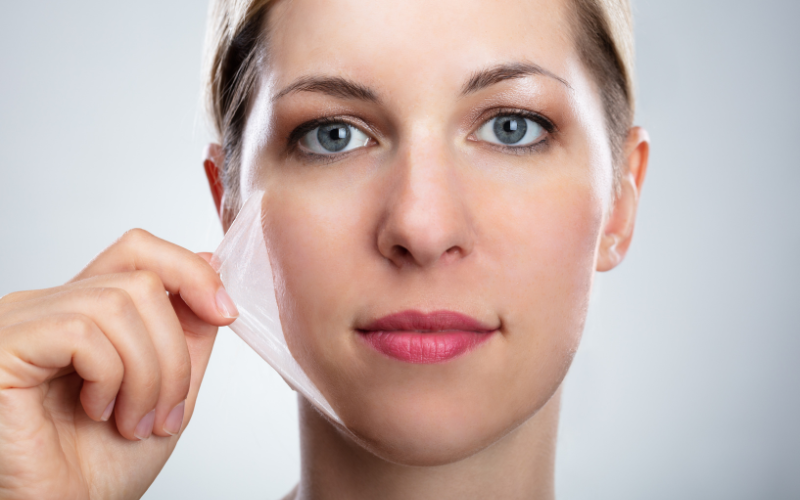
How Often Should You Use a Body Peel for Optimal Results?
Finding the best frequency for your body peel treatments depends on the peel’s strength, your skin’s needs and how your skin heals. While general guidance suggests scheduling treatments every four to six weeks, you should adapt this interval based on the peel type and your skin’s response. Understanding the relationship between peel strength and frequency helps you achieve results without compromising skin health.
Guidelines for Regular Treatment
Typically, a chemical body peel is performed every four to six weeks to allow sufficient healing. However, deeper peels may only be advisable every three to six months because they penetrate further and require more recovery. Consider these guidelines:
- Assess the treatment area: Peels for rough body skin (like the back or arms) may be stronger than those for the face. Choose the appropriate intensity for each area.
- Understand peel types: Medium or deep peels necessitate longer intervals. Lighter peels—similar to hydrafacial or gentle AHAs—can be used more often.
- Monitor your skin: If you experience prolonged redness or irritation, increase the time between treatments. Adjust frequency based on your skin’s tolerance.
Understanding Peel Strength and Frequency
Because body peels are stronger than facial peels, careful scheduling prevents over‑exfoliation. Medium‑depth peels targeting deeper layers should be spaced further apart (three to six months), while superficial peels may be repeated monthly or as recommended by your provider. Comparing chemical peels vs hydrafacials helps gauge intensity: hydrafacials are gentler and can be performed frequently for maintenance between peels.
Always allow adequate time for your skin to heal and regenerate before the next session. Over‑peeling can lead to sensitivity, hyperpigmentation or scarring, so maintain balance to preserve skin health.
What is the Best Aftercare for a Body Peel?
After undergoing a chemical peel, adherence to specific skin‑care practices ensures optimal healing and results. Avoid common mistakes like excessive sun exposure or using harsh products, which can hinder recovery and cause complications. Follow these tips to support your skin post‑peel.
Post‑Peel Skin Care Tips
Proper aftercare maximizes the benefits of a body peel. After your chemical peel, the surface layer is removed, leaving new, more sensitive skin exposed. To protect this fragile skin:
- Maintain hydration: Apply a fragrance‑free, gentle moisturizer to alleviate tightness and dryness. Avoid irritants such as perfumes or active acids.
- Protect from the sun: Use a broad-spectrum sunscreen with SPF 30+ every day to help prevent dark spots and protect your skin from sun damage.
- Avoid harsh products: For at least a week, skip retinoids, AHAs, BHAs, scrubs or exfoliating brushes, as these can exacerbate sensitivity. Follow your practitioner’s instructions regarding when to resume these products.
In addition to topical care, avoid saunas, excessive exercise or activities that induce perspiration for 24–72 hours after a peel. Postpone other skin treatments for one week and always consult your provider before introducing new products. These precautions help your skin heal effectively and reduce the risks of irritation or infection.
Conclusion
Now you know that body peels are powerful tools for rejuvenating skin across your entire body. They’re effective for most skin types and can tackle hyperpigmentation, acne scars, keratosis pilaris and signs of ageing. With regular treatments—timed appropriately for peel strength and skin sensitivity—you can maintain smooth, radiant skin. Proper aftercare, including moisturizing and sun protection, is essential to maximize results and prevent complications. Embrace the transformative potential of chemical body peels, and enjoy healthier skin that reflects your commitment to self‑care.

Highly skilled cosmetologist at Tune Clinical Aesthetics, specializing in advanced skin and hair treatments.

